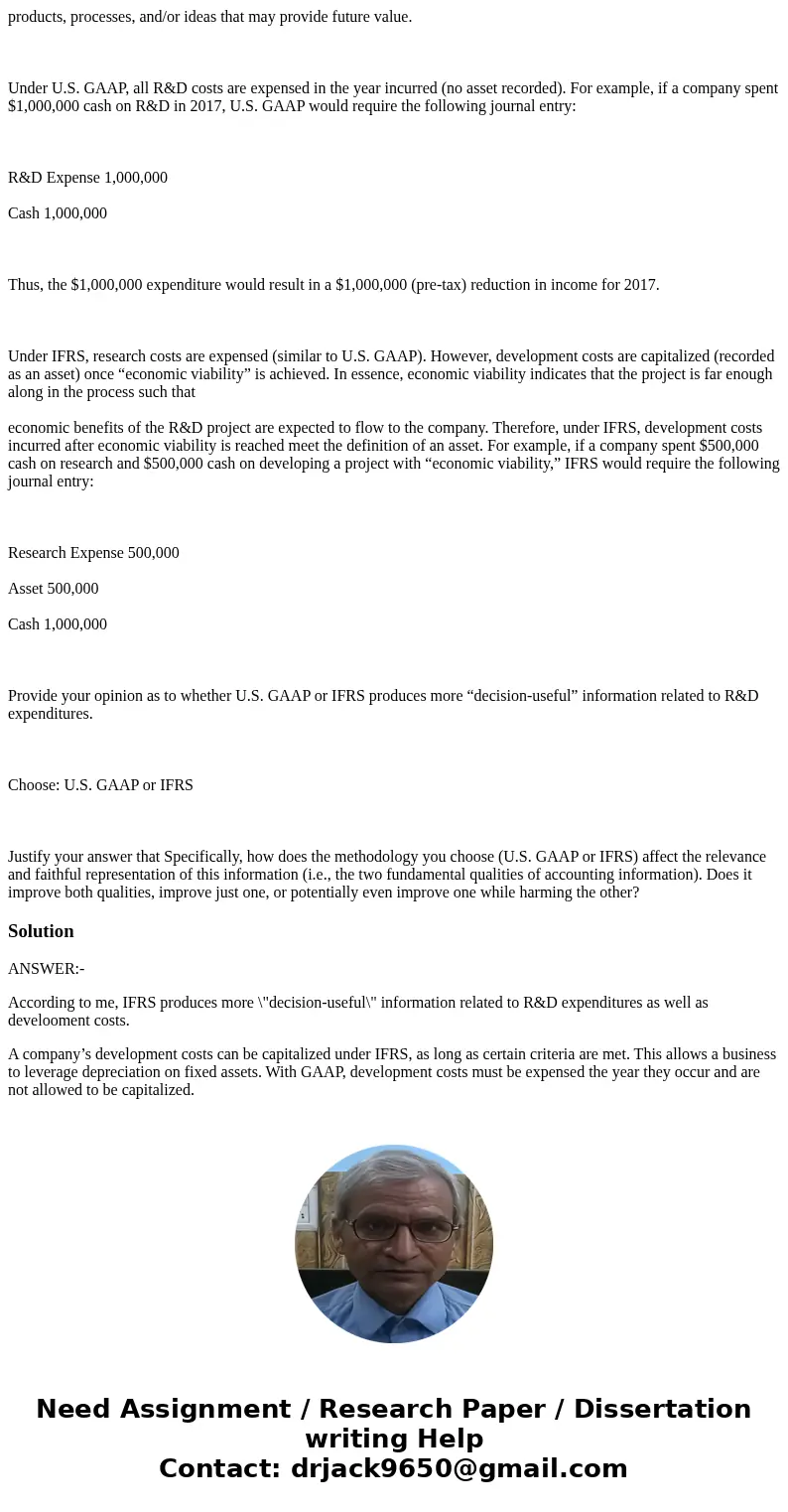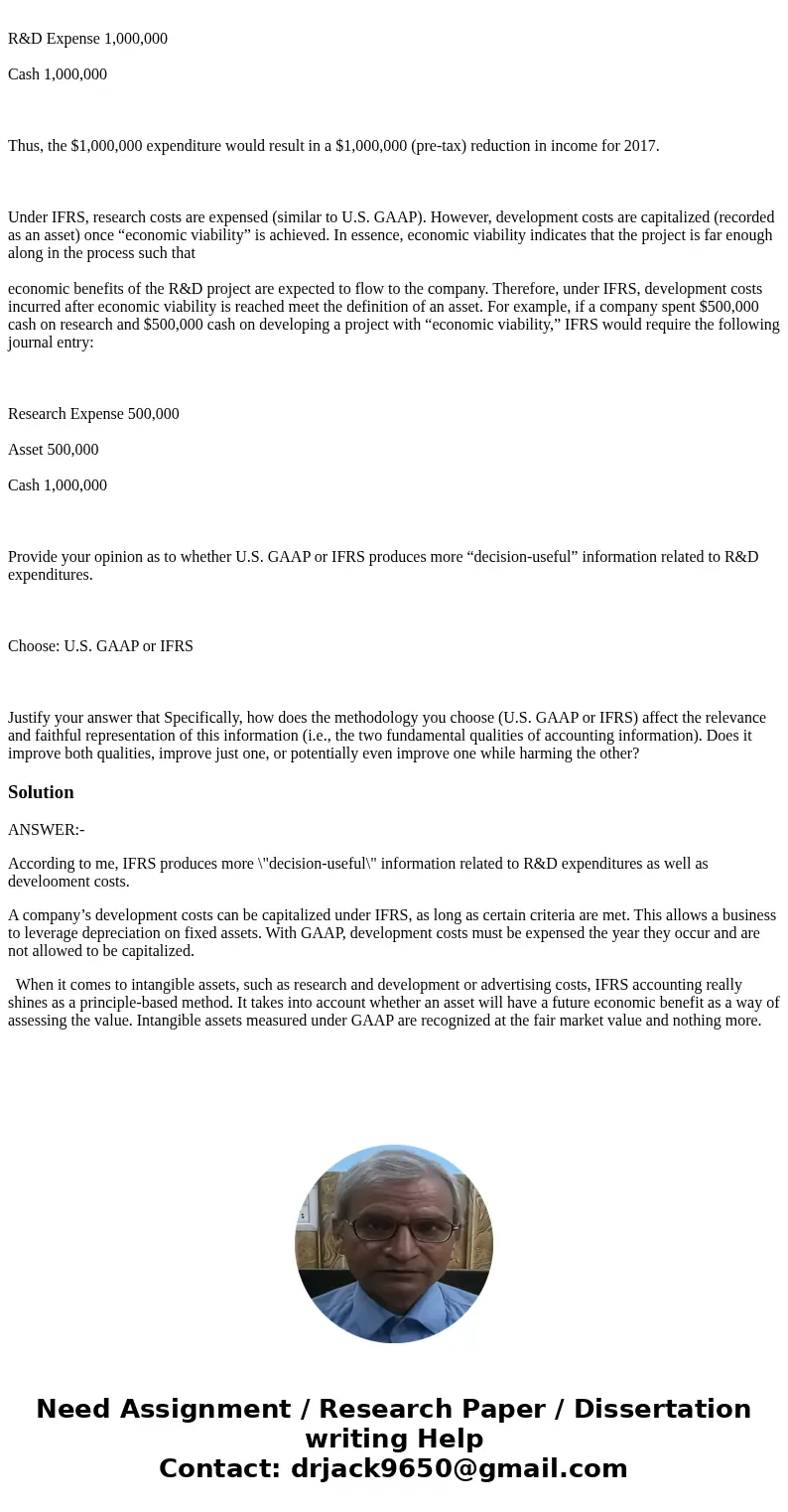products processes andor ideas that may provide future value
products, processes, and/or ideas that may provide future value.
Under U.S. GAAP, all R&D costs are expensed in the year incurred (no asset recorded). For example, if a company spent $1,000,000 cash on R&D in 2017, U.S. GAAP would require the following journal entry:
R&D Expense 1,000,000
Cash 1,000,000
Thus, the $1,000,000 expenditure would result in a $1,000,000 (pre-tax) reduction in income for 2017.
Under IFRS, research costs are expensed (similar to U.S. GAAP). However, development costs are capitalized (recorded as an asset) once “economic viability” is achieved. In essence, economic viability indicates that the project is far enough along in the process such that
economic benefits of the R&D project are expected to flow to the company. Therefore, under IFRS, development costs incurred after economic viability is reached meet the definition of an asset. For example, if a company spent $500,000 cash on research and $500,000 cash on developing a project with “economic viability,” IFRS would require the following journal entry:
Research Expense 500,000
Asset 500,000
Cash 1,000,000
Provide your opinion as to whether U.S. GAAP or IFRS produces more “decision-useful” information related to R&D expenditures.
Choose: U.S. GAAP or IFRS
Justify your answer that Specifically, how does the methodology you choose (U.S. GAAP or IFRS) affect the relevance and faithful representation of this information (i.e., the two fundamental qualities of accounting information). Does it improve both qualities, improve just one, or potentially even improve one while harming the other?
Solution
ANSWER:-
According to me, IFRS produces more \"decision-useful\" information related to R&D expenditures as well as develooment costs.
A company’s development costs can be capitalized under IFRS, as long as certain criteria are met. This allows a business to leverage depreciation on fixed assets. With GAAP, development costs must be expensed the year they occur and are not allowed to be capitalized.
When it comes to intangible assets, such as research and development or advertising costs, IFRS accounting really shines as a principle-based method. It takes into account whether an asset will have a future economic benefit as a way of assessing the value. Intangible assets measured under GAAP are recognized at the fair market value and nothing more.


 Homework Sourse
Homework Sourse